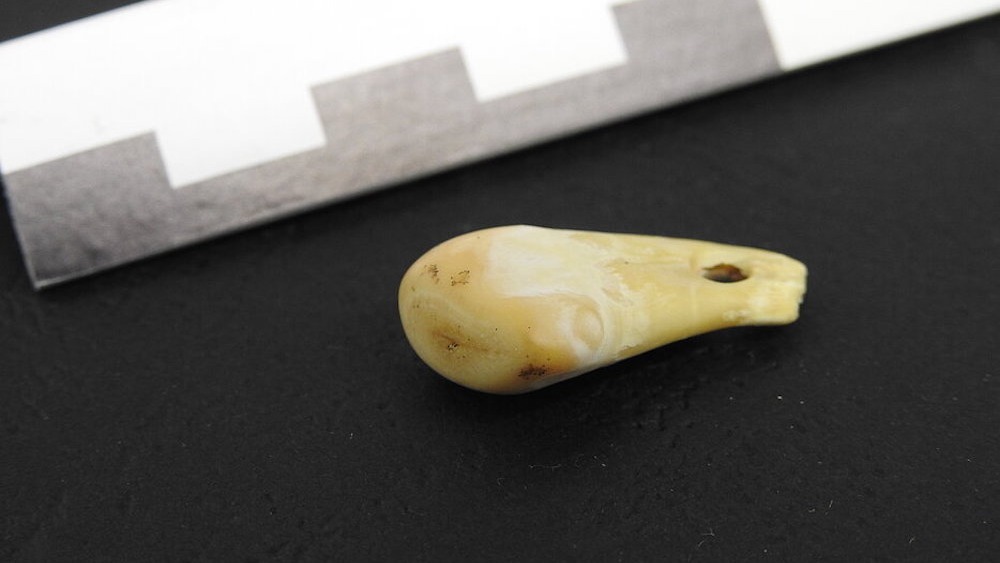
Researchers have retrieved human DNA from a Paleolithic pendant and discovered that it belonged to a Siberian woman who lived roughly 25,000 years ago.
This is the first time scientists have successfully isolated DNA from a prehistoric artifact using a newly developed extraction method, according to a study published Wednesday (May 3) in the journal Nature.
In 2019, archaeologists discovered the thumbnail-size pendant buried inside Denisova Cave in the Altai Mountains in southern Siberia. This cave is famous for once housing Neanderthals, the mysterious Denisovans and even modern humans, according to fossil and DNA evidence. The pendant is further evidence of the cave's human occupation. Measuring roughly 0.79 inch (2 centimeters) long, the pierced deer tooth contained a single hole, which was likely drilled so that the wearer could hang it around their neck.
Because teeth are highly porous, they're more likely to retain traces of DNA, such as from skin cells or sweat, compared with other materials, making them a good candidate for the team of international scientists to test the new method. To help "preserve the integrity" of the artifact while isolating the DNA, they designed the method to be nondestructive, according to a statement.
Related: Mysterious 'painted people' of Scotland are long gone, but their DNA lives on
This new technique involved using a soft spatula to carefully remove any leftover sediment from the cave before submerging the artifact into a buffer bath of sodium phosphate, which released the ancient DNA gradually beginning at the surface level and then deeper into the tooth. The researchers then increased the temperature of the liquid incrementally, beginning at room temperature, and swapping out the liquid multiple times until the human and deer DNA were released from the artifact, according to the study.
"The amount of human DNA [recovered] from using this method was mind blowing for me," study author Elena Essel, a doctoral candidate at the Max Planck Institute for Evolutionary Anthropology in Leipzig, Germany, told Live Science in an interview. "I expected to only get a bit of human DNA, but we had more than enough to tell the human and animal DNA apart."

While Essel said it would take further examinations to know specifically the source of the DNA — be it from sweat, blood or another biological form — the researchers were able to compare it with known human populations and determined that both the woman and the deer, a species of elk (Cervus canadensis) known as wapiti, lived sometime between 19,000 and 25,000 years ago and that the woman was of Siberian heritage.
"Time-wise it fits," Essel said, "and geographically, the location of where the artifact was found fits."
Essel thinks this new method of DNA extraction could potentially be used on a variety of ancient artifacts, including tools, ornaments and other items once touched by humans.
"We think we can extract DNA from all types of artifacts using this method," Essel said. However, it's important that archaeologists wear proper equipment not just in the lab but during excavations, such as "gloves and masks to avoid cross contamination from their own DNA."







